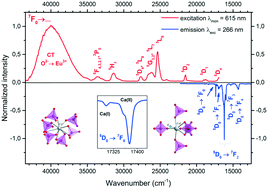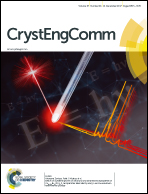Effects of crystalline growth on structural and luminescence properties of Ca(10−3x)Eu2x(PO4)6F2 nanoparticles fabricated by using a microwave driven hydrothermal process†
Abstract
Eu3+ doped fluorapatite nanopowders were synthesized by a microwave assisted hydrothermal technique and annealed in the 500–1000 °C temperature range for 3 h. The europium ion concentration was determined to be in the 0.5–10 mol% concentration range. The morphology and structural properties of Ca(10−3x)Eu2x(PO4)6F2 were determined by using TEM (transmission electron microscopy) and XRPD (X-ray powder diffraction) techniques, as well as the IR (infrared) and Raman spectroscopy. The average nanoparticle sizes were calculated by Rietveld refinement to be in the range from 30 nm for the as-prepared samples to above 100 nm for the materials thermally treated at 1000 °C. The particles developed into rectangular prism nanorods. The spectroscopic properties of the obtained materials were observed to be dependent on the dopant concentration and annealing temperature and were studied in detail. The Judd–Ofelt theory was applied and correlated with structural and optical properties to get detailed insight into the fluorapatite structures.



 Please wait while we load your content...
Please wait while we load your content...